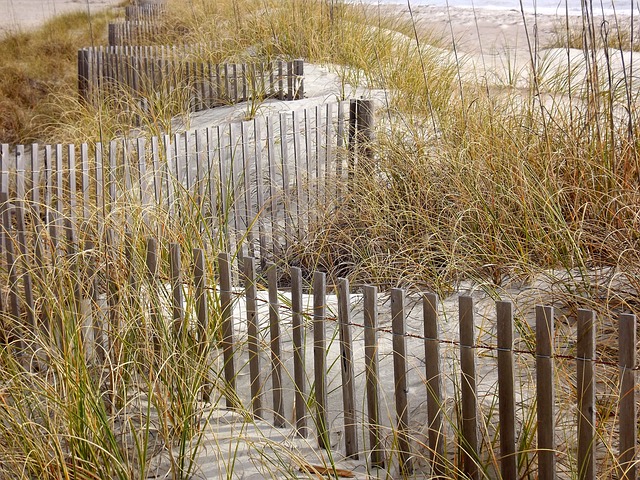In New Bedford, MA, enhancing your property with a durable and aesthetically pleasing fence is made accessible through vinyl fence installation. This comprehensive guide navigates the process, from understanding local regulations to selecting experienced contractors like those in New Bedford. We explore the benefits of vinyl fences, their versatility, and low-maintenance nature. By delving into the step-by-step installation process and maintenance tips, homeowners can ensure a long-lasting and attractive addition to their properties.
- Understanding Vinyl Fence Installation in New Bedford
- Choosing the Right Contractor for Your Project
- The Benefits of Vinyl Fences for Your Property
- Step-by-Step Guide to Installation Process
- Tips for Maintaining Your New Vinyl Fence
Understanding Vinyl Fence Installation in New Bedford
In New Bedford, MA, vinyl fence installation is a popular choice for homeowners looking to enhance their outdoor spaces. This low-maintenance fencing option offers durability and a wide range of aesthetic possibilities, from classic white picket fences to more contemporary styles with diverse colors and textures. Understanding the process of vinyl fence installation is crucial for ensuring a successful project that complements your property’s unique character.
The first step involves assessing your property and determining the best layout and design for your vinyl fence. Contractors will measure the area, consider local regulations, and collaborate with you to select the ideal style, color, and add-ons like gates or panels with intricate designs. Once the planning is complete, the installation process begins, typically involving post-hole digging, panel assembly, and securement with brackets and fasteners. This relatively quick and efficient method ensures a long-lasting fence that requires minimal upkeep.
Choosing the Right Contractor for Your Project
When considering vinyl fence installation, selecting the right contractor is paramount to ensure a project’s success. Researching and comparing local contractors is essential; look for those with proven experience in vinyl fencing, positive client reviews, and a solid portfolio showcasing their work. Ask for references and reach out to previous customers to gauge their satisfaction levels.
Additionally, verify the contractor’s licensing and insurance coverage. Licensed professionals are held to higher standards, ensuring they meet specific industry requirements. Insurance protection guarantees that your project is secure in case of any accidents or damage during installation. Meeting these criteria significantly reduces potential risks and ensures you receive quality workmanship for your vinyl fence.
The Benefits of Vinyl Fences for Your Property
Vinyl fences offer numerous advantages for property owners in New Bedford, MA. One of their key benefits is low maintenance. Unlike wooden fences that require regular painting and sealing to protect against rot and pests, vinyl fences are resistant to rust, decay, and insects, ensuring they stay looking good with minimal upkeep. They also provide excellent privacy and security, acting as a barrier that keeps your property safe from intruders while shielding your activities and conversations from the outside world.
Additionally, vinyl fences come in various styles and colors, allowing homeowners to personalize their outdoor spaces. From traditional picket designs to modern sleek panels, there’s a vinyl fence option to complement any aesthetic. Moreover, they are cost-effective, offering a more affordable alternative to wood or iron fences while providing longevity and durability. This makes them an attractive investment for property enhancement and security in New Bedford, MA.
Step-by-Step Guide to Installation Process
The first step in installing a vinyl fence is preparing the site. This involves clearing the area, removing any debris or existing barriers, and ensuring the ground is level. Mark out the perimeter of your desired fence line using string or stakes to guide the installation.
Next, dig post holes at predetermined locations along the fence line. The depth and width of these holes should be suitable for supporting the weight of the vinyl posts. Place concrete in the holes and allow it to set firmly, ensuring each post is securely anchored. Once the concrete hardens, attach the vinyl posts to the holes using appropriate brackets or connectors. Then, fit the individual panels of vinyl fencing together, creating a continuous barrier. Finally, secure the top rail and any additional accessories like gates or latches, completing the installation process.
Tips for Maintaining Your New Vinyl Fence
To keep your new vinyl fence looking its best, regular cleaning and maintenance are essential. Start by sweeping or brushing away any loose dirt, debris, or leaves that may accumulate on the fence’s surface. Use a soft-bristled brush to gently remove stubborn stains or marks. Avoid using harsh chemicals or pressure washers, as these can damage the vinyl coating. Instead, opt for mild soap and warm water solutions for cleaning.
Inspect your fence regularly for any signs of wear, such as cracked or broken panels, loose posts, or rusted hardware. Promptly repair or replace damaged components to prevent further deterioration. Keep an eye out for excessive moisture buildup, which can lead to rot or warping. Ensure proper drainage around the fence and consider using a water-repellent sealer to protect against moisture absorption.
